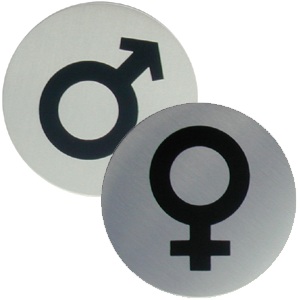 The Association of American Law Schools Directory of Law Teachers has many lists, including compilations of professors’ self-reported teaching fields. The AALS also issues a regular Statistical Report on Law Facultry (2006-2007 version here) that contains all sorts of interesting factoids, including the gender breakdown of teachers by subject matter. According to the Statistical Report 2006-2007 (here), men and women are 65.1% and 34.9% respectively of all full-time tenured or tenure-track faculty members.
The Association of American Law Schools Directory of Law Teachers has many lists, including compilations of professors’ self-reported teaching fields. The AALS also issues a regular Statistical Report on Law Facultry (2006-2007 version here) that contains all sorts of interesting factoids, including the gender breakdown of teachers by subject matter. According to the Statistical Report 2006-2007 (here), men and women are 65.1% and 34.9% respectively of all full-time tenured or tenure-track faculty members.
I was browsing the AALS directory for another reason, and the list of Immigration Law teachers caught my eye. There were many more women listed than I expected. That inspired me to look for precise data on the gender breakdown of teachers of Immigration Law and (what I considered to be) the “related” fields of Comparative Law and Human Rights Law. Here is what I found out for those three fields:
- Of Comparative Law faculty members, 28 out of 30 (93.3%) are male; 2 out of 30 (6.7%) are female.
- Of Human Rights Law faculty members, 120 out of 192 (62.5%) are male; 72 out of 192 (37.5%) are female.
- Of Immigration Law faculty members, 91 out of 172 (53%) are male; 81 out of 172 (47%) are female.
I do not follow these areas closely; the data surprised me. I find it curious that the gender division of teachers of Human Rights Law – but not the other two fields – generally tracks the gender split in the overall profession.
I then looked at the gender breakdown in these fields at my home institution, and compared it to other area schools. Would the data for my school track or deviate from the national or local statistics? Here are the results:
| Comparative Law men/women |
Human Rights Law men/women |
Immigration Law men/women |
|
| Brooklyn | 1/1 |
0 |
0/1 |
| Columbia | 12/2 |
4/0 |
0 |
| Fordham | 3/1 |
2/1 |
0/3 |
| Hofstra | 4/1 |
0/1 |
0/1 |
| NYLS | 4/2 |
1/1 |
0/1 |
| NYU | 9/2 |
2/2 |
0/2 |
| Pace | 2/0 |
0/1 |
0/1 |
| St. John’s | 2/1 |
0 |
0/1 |
| Yeshiva | 1/1 |
0/1 |
0 |
Aggregate Data from NY-Area Law Schools:
| Comparative | Human Rights | Immigration | |
| Total men/women | 38/11 | 9/7 | 0/10 |
| Total number | 49 | 16 | 10 |
| Percent men/women | 77.6/22.4 | 56.3/43.7 | 0/100 |
The data would appear to be mostly, but not entirely, accurate. I know of one NY-area, full-time male professor who teaches Human Rights Law but does not appear in the AALS listing. And, of course, the sample is undoubtedly too small to be representative. The data may have other errors. That being said, wow! Women are 100% of the tenured or tenure-track facultry teaching Immigration Law in the NY area? This was not the result I expected.
Why the disproportionate number of male Comparative Law teachers? Why the disproportionate number of female Immigration Law teachers? Is Comparative Law considered a “difficult” subject (like Tax), but Immigration Law is a “soft” subject (like ?), so women are more likely to teach the “soft” subject? Is Immigration Law more commonly associated with clinicial work? Is Immigration Law seen as “helping” field and but Comparative Law is a “theoretical” field? How does Human Rights Law fit into this paradigm? I was under the anecdotal impression that Immigration Law was becoming more popular with students. But, did I hear that from female professors (and students)?
-Bridget Crawford


To add a hypothesis – I suspect (though it’s only a guess) that Immigration Law professors are more likely to have actually practiced law and come to professing as a second career rather than the (relatively) straight out of law school track. I wouldn’t be surprised if that tended more toward women. Plus the tie-in with clinical work and the fact that it may be seen as “practical” and less “theoretical.”